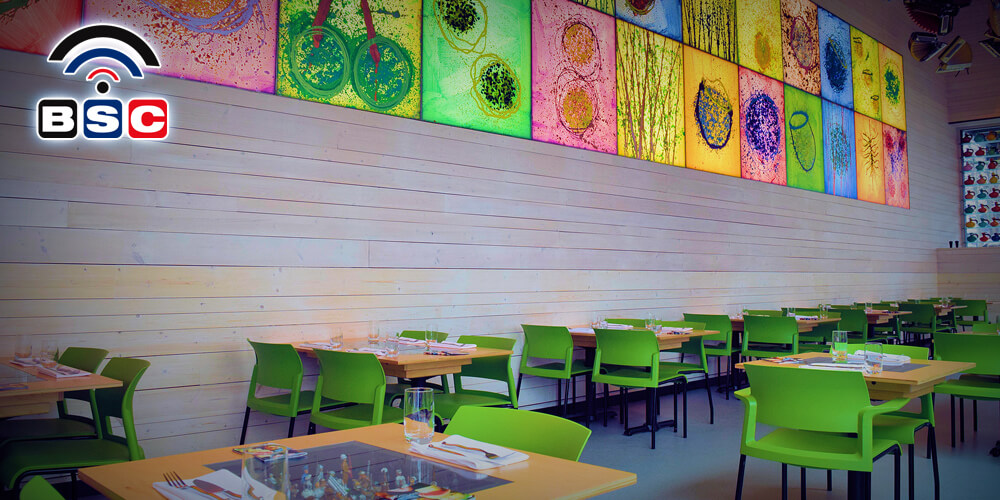Houston restaurants reopening dining rooms have work to do to raise the bar on customer experience. For instance, how can a freshly baked cookie aroma or popcorn make you want to order some even if you didn’t intend to? How does a soft melodious music and a beautifully laid out tabletop compel you to stay longer at a restaurant? None of these involve eating food first, and yet the restaurant’s sales are boosted. This simply reflects how our senses influence our choices and purchases.
We Expect More
Over the years, the restaurant industry has grown and become more than just a place to get food service. For the same reason, running a restaurant is no longer just about serving quality food. It’s up to restaurant owners and management to keep up with technological advances in neuro-marketing that includes heightened sensory experiences.
Create a “WOW” moment for your customers that delights more than just the palate. The gap between customer expectations and what a restaurant can do to improve the customer experience is where the opportunity lies.
Sensory Solutions Elevate the Customer Experience
Customers spending money at a restaurant want and expect an exceptional experience, even if they are buying a simple burger at a counter.
Purchasing food involves more than pricing, food variety and preference, and timely order processing. Let’s say you want to order your favorite cheeseburger or pasta, and despite so many local restaurant options, you decide to go to a particular food outlet every time. Other sensory factors you may not be aware of come into play in that decision.
Many neuroscience experts suggest that our senses – smell, taste, touch, sound, and sight – affect what we feel, what we like or dislike, our mood and the decisions we make when ordering food.
While taste, touch, and smell were recognized as the elements determining flavor decisions, auditory and visual are now an integral part of the entire sensory experience at restaurants. Let’s assess each of these sensory experiences individually to understand their potential to drive sales and enhance the customer experience at restaurants.
Sight
Don’t we all decide where to sit at a restaurant with our eyes first – a nice entrance, comfortable seating, cleanliness, etc.? And, at drive-thru restaurants, menu boards make all the difference. You see how visuals play an important role in the entire eating and dining experience. We all want to know what our menu selection will look like. Pictures sell food. Strategic placement of a high-end feature menu-item will drive sales to that item. Digital menu boards offer the ability to change items to optimize profit. It’s genius.
Restaurants take measures to communicate their brand identity through bright lighting, ergonomically designed seating, digital menu boards, menus with high resolution pictures, and more.
Even more incredible is Mood Media’s latest commercial TV offering that combines family-friendly programming with the power of digital signage. Keep customers off their phones and dialed into your messaging. It’s like having your own fully-branded, private local TV network with custom ads. (MoodMedia, 2021).
Scent
Customers are likely to remember a menu item more quickly with its aroma. Aromatic cues are a large part of serving different food items and making customers happy. The smell of freshly brewed flavored coffee or baked goods is difficult to ignore. It’s also an intelligent way to create a signature brand scent that customers will never forget, driving frequent footfall and boosting sales.
Restaurants look for specialists to help them find the right scent. Mood Media’s scent solution offers 1600+ fragrances to choose from and is specially designed for business use safely without the use of an open flame as with wax melting burners or scented candles. You can also customize a signature scent for your restaurant.
Touch
You may be wondering, except for touching food, what else there is to touch and feel happy about at a restaurant. How about the feel-good factor you get while sitting on a chair with lovely fabric and cushioning, the texture of the plates, soft napkins, stylish cutlery, etc. All these touch points contribute to a happy experience and differentiate a restaurant from a standard sit-down place to a premium one.
An innovative packaging and eco-friendly cutlery are also cues for QSR brands to connect with customers. Sustainable solutions sell. We are all conscious of our carbon footprint and promoting the use of packaging and food ingredients that are sustainable tells customers you care about what they care about. And remember, customers are willing to pay extra dollars to feel that difference.
Sound
Customers want it all – delicious food, excellent service, and fantastic ambiance to make the experience memorable. Auditory elements are crucial to offer that experience with added entertainment. According to Mood Media’s recent survey study of over 10,000 consumers, 58 percent of quick-service customers recall hearing and enjoying music while dining. (QSRMag, 2020) That’s a number we can’t ignore.
So, think about the atmosphere you want to create for customers to remember through music – a quiet fine dining or a lively casual eating restaurant. Selecting the right music can be a daunting experience. Mood Media can help with this – leading the shift from passive consumer experiences to technology-enabled customer engagement. The new ‘Social Mix’ can turn your music into an unforgettable social listening experience. Social Mix invites your customers to interact with the music playing in your business, allowing them to select the songs they want to hear most. The most popular songs in the mix rise to the top of the playlist. It’s better than a jukebox because it’s interactive and shareable. For more straightforward choices, they also offer ‘Harmony Music,’ a mobile-friendly brand experience platform. (MoodMedia, 2021)
Check out how it works here: https://vimeo.com/245408901
Mood Media Social Mix – Restaurant from Mood on Vimeo.
Taste
While we explained to you the potential of other sensory experiences, we can’t underestimate the power of taste in the food industry. Customers, for the most part, are paying for a delicious meal of their choice. Techniques like food trials and sampling influence customers to try new items on the menu and leave them wanting more.
Don’t Overlook This
Apart from these multi-sensory factors, what changed remarkably since last year is every customer’s viewpoint on restaurants’ hygiene and cleanliness practices. It’s an unspoken rule. Customers place a high value on safety and sanitization practices which adds a new competitive dimension for restauranteurs.
BSC is a Mood Media Authorized Dealer – Sales, Installation, Service
So, are you ready to reopen your dining room at full capacity to guests? We expect you to want more for your customers post-COVID. Once again, Houston restaurants reopening dining rooms have work to do to raise the bar on customer experience.
We are connected to market influencers like Mood Media who are helping restaurant owners cater to changing customer expectations. Business Sound and Communications continues to create new opportunities to boost sales for QSR, fine dining and hospitality business owners. You can find our website at bsctx.com where you can get an idea of our communications technology expertise as well as expanded offering for exceeding consumer expectations, keeping those coveted 5-Star Google reviews coming. We’ll help you get there!
Works Cited
QSRMag, Sponsored. Why Restaurants Need to Invest in Sensory Experiences. 9 Feb. 2020, www.qsrmagazine.com/sponsored/why-restaurants-need-invest-sensory-experiences.
MoodMedia, Team. “QSR.” Mood Media, 19 Feb. 2021, us.moodmedia.com/qsr/.
MoodMedia, Team. “Social Mix.” Mood Media, 17 Feb. 2020, us.moodmedia.com/social/social-mix/.


